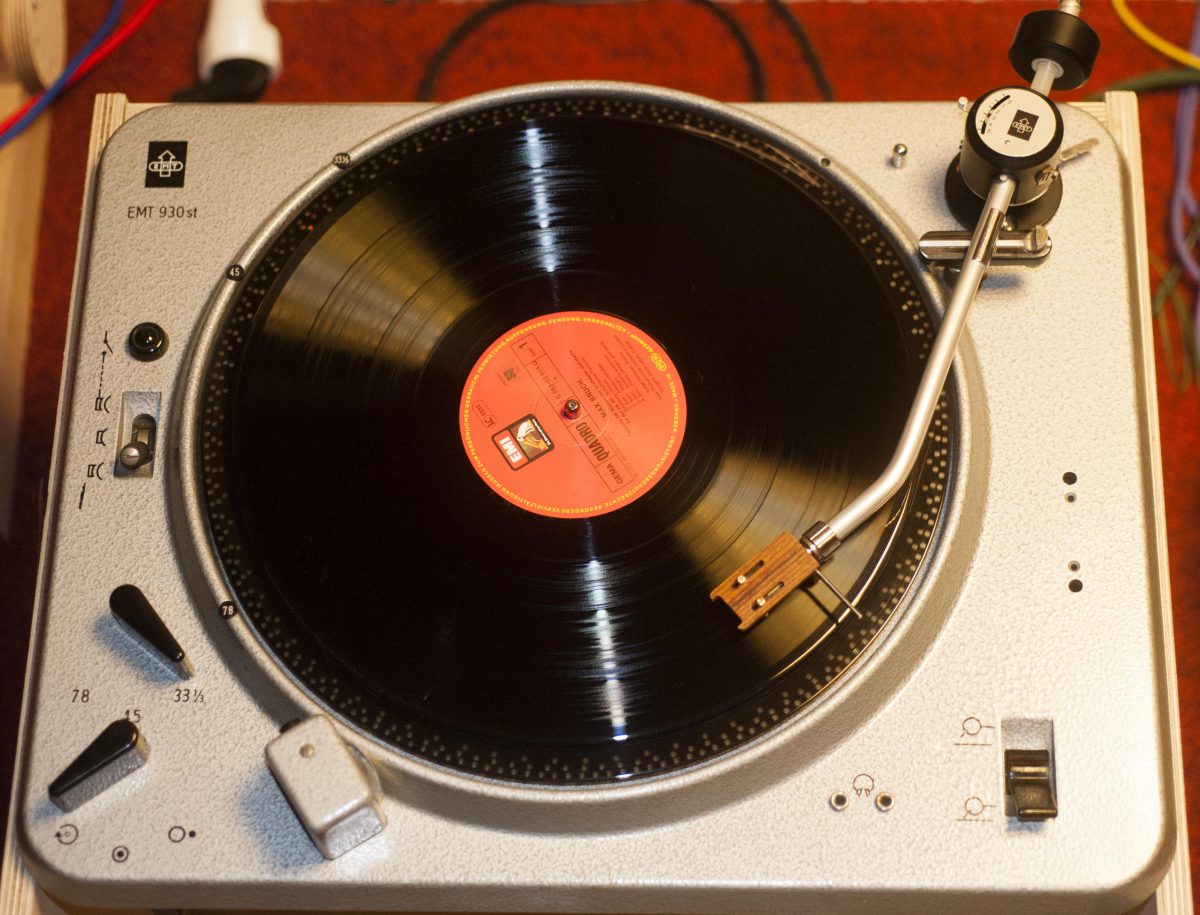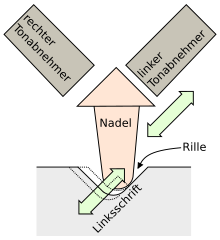Which pickup sounds best?
MM or MC?
Light arm or heavy arm?
Finished turntable or drive with free tonearm / pickup combination?
Questions about questions!
The following essay should be an attempt at a systematic approach taking into account personal experience .
With the purchase of the first turntable ( Thorens TD147 ) I had no experience with the terms let alone with the technology behind it.
Fortunately, the dealer provided the “lightweight” tonearm ( TP16 ) with just the right pickup for a student budget. I have been and still are happy with this MM system ( DL110 ) for a long time.
What had the dealer done right then?
He knew the assignment of the tonearm (easy-medium-hard), knew the degree of mobility of the needle – the compliance or speed, and he knew that in the face of my Portomanais the combination fit.
This is the topic actually done, right?
However, if you wish, you are welcome to continue reading because I would like to try to “handle” all my subsequent experiences with pickups and tonearms in a certain system.
What does the pickup do, what does the tonearm do, what are the influences on the music reproduction that lies in this small, inconspicuous groove that sometimes means the navel of the (vinyl) world?

In addition, some theory in advance.
What is written “in the plate”? An excerpt from Wikipedia incl. The photos):
Plate fonts
There are three main engraving processes, two of which are still used today. The size of the groove has been continually reduced over the years. Had shellac plates a groove width of 120 microns (normal groove) , the micro groove commonly used today is unmodulated 40 microns wide; the groove bottom has a radius of 8 μm. The groove spacing is here at linear feed without the use of Füllschrift about 70 microns.
Depth font (vertical font)
In the case of the subscript used by Edison and Pathé , the information is impressed into the record by the immersion depth of the cutting stylus. The depth is directly proportional to the amplitude of the recorded signal. The maximum amplitude to be recorded is low because the immersion depth can not be arbitrarily large. To be able to reproduce high frequencies, the needle must follow the grooves of the groove very quickly. To achieve this, the pick-up force of the pickup must be increased, but this leads to increased plate wear.
Change font
In the page font introduced by Emil Berliner in 1888, the information is imprinted in the horizontal deflection of the groove. The advantage over the subscript is a greater dynamic range and the easier production of copies. Also, in contrast to the deep writing the crackling is significantly reduced. The page font was used on gramophones and early turntables. It is only suitable for one channel and, in the case of gramophones, directly directs a cone opening into a funnel via a steel needle. When playing a mono record in page writing with a stereo pickup, the mono signal is played back on both channels.
edge magazine
The Alan Blumlein already developed around 1930, but only in 1957 marketed by the EMI flank font made possible for the first time monocompatible stereo recordings. The sound information for the left and right channels is impressed into the 45 ° flanks of the groove. In the inner flank of the left channel is stored in the outer groove flank of the right channel. The direction of deflection of the cutting stylus is out of phase with the left and right channels, so that a mono signal recorded with a stereo cutting head generates a page font. This ensures backward compatibility with mono systems: when a stereo record is played on a mono player, only the horizontal deflection of the groove is reproduced. This corresponds to the sum (L + R) of both channels.
Alright?
Put simply, the reproduction of the sound information is composed by a combination of up / down motion and left / right motion.
The pickup
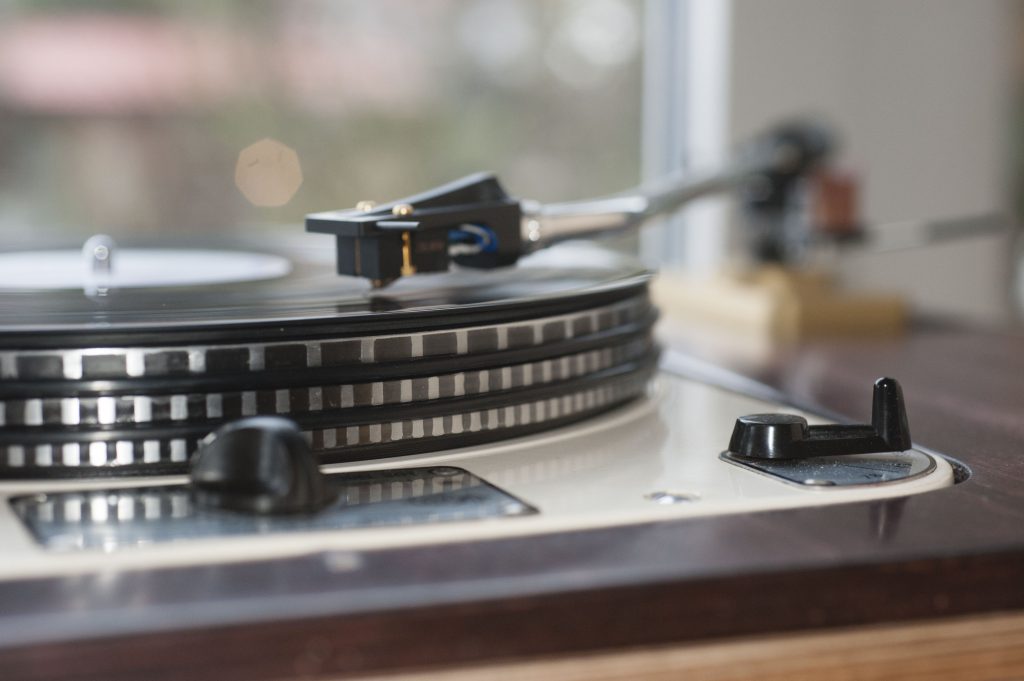
First of all, I would like to focus on the pickup, which ultimately transforms the mechanical information into electrical energy .
Here are the different transducer principles for the train:
MM (moving magnet): a magnet is moved (in a coil)
MC (moving coil): a coil is moved in a (strong) magnetic field
MI ( moving iron): a piece of “iron” is moved in a coil field similar to the MM. The peculiarity is the mass poverty of the moving iron
However, it is not possible to look at the pickup detached from the tonearm.
Both form a unit and thus ultimately a “spring-mass system” that has the goal that the pickup of the groove writing can follow optimally .
What distinguishes the ideal pickup ?
Presumably, this ideal does not exist because, as in music reproduction, it is only the approach to an ideal.
But the pickup should find conditions that allow him an optimal scanning of the above grooves.
Ideal means:
– over a wide frequency range
– as linear as possible
– Low distortion at high and low frequencies
– Generation of a sufficiently high output voltage (0.1 – 4mV)
Dependent on the pickup but now inevitably of the mechanical leadership or the “suspension”, which allows him to run independently in the groove.
This task is performed by the tonearm .
The tonearm
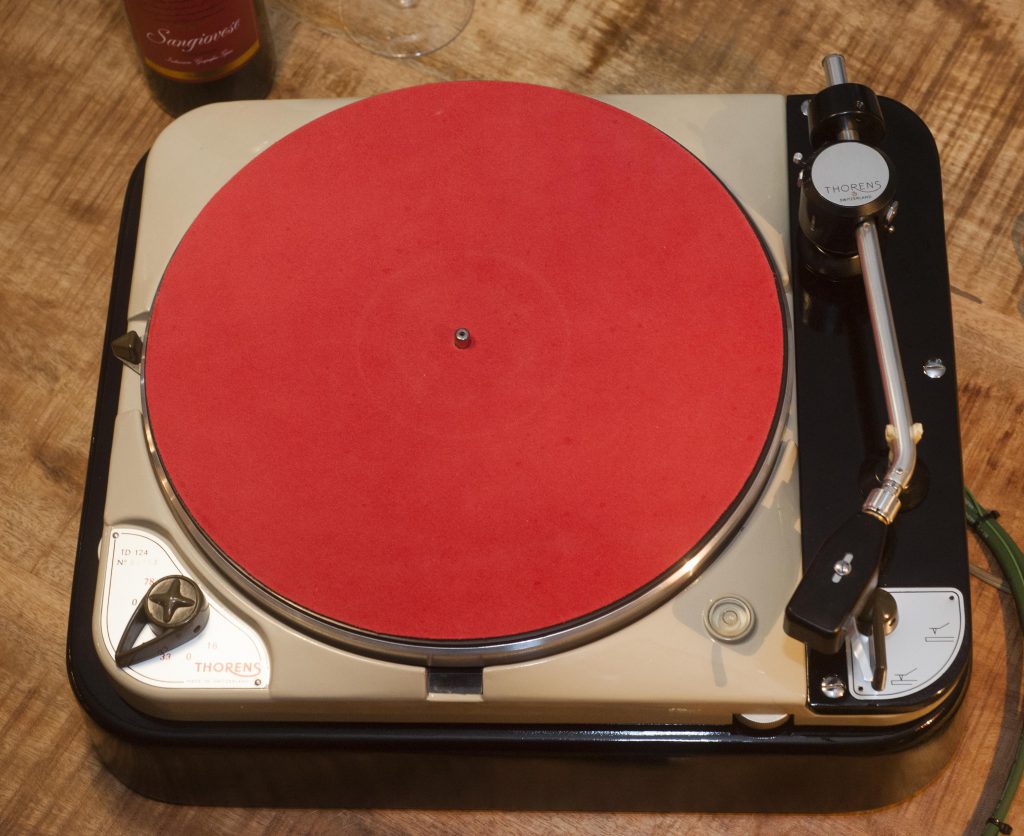
As Tonarmtypen there are roughly the
– Swing arm
– tangential tone arm
Both types have the task that the pickup can follow the groove and convert the mechanical information into electrical.
Characteristics of the tonearm are:
– his length
– its effective weight
– The adjustable contact force
Now it is becoming clear that the pickup and the tonearm are ALWAYS to be seen as a unit.
Not every tonearm fits every pickup !!
For example, if a needle is “softly” suspended in a pickup, but the weight of the tone arm and pickup are very high, the tone arm “mechanically” depresses the ability of the needle to move.
Conversely, it does not work, a stiffly suspended needle would “slip” on a very light arm on the groove.
This raises the question as to which parameters are required, that the pickup and the arm basically harmonize with each other?
On the part of the pickup :
– the weight of the pickup / headshell
– the fast or compliance (“soft” or “hard” type)
On the part of the tonearm
– the effective tonearm mass
From these parameters can be calculated, which fits.
Then of course there is the personal sound impression and the preferences for MM / MI or MC systems – and the price!
My determination always began with the choice of the arm, then the appropriate pickup.
And now the practice:
tonearm:
How can the “good” arm be moored?
Purely practical in terms of design , ease of use , ease of installation and adjustment options .
Precision mechanical construction:
– Length (9in or 12in)
– Cutting edge bearings made of bronze, stainless steel or plastic
– high-quality ball bearings / replacement ridden ball bearings
– One-point storage
– multipoint storage
Ease of use:
– Tonarmlift
– Pickup (SME or EMT adapter)
– Replacement sonar tube
Assembly:
– tonearm base
– Bore aids
– Fixing over plate or big nut
adjustment:
– Weight adjustment
– Adjustment of the overhang
– Adjusting the tonearm height
– Change of the VTA (vertical tracking angel)
– Setting antiskating
Pickups:
What am I doing here suitable or less suitable?
– converter principle (MM, MI, MM)
– Weight of headshell and pickup (total weight)
– Compliance / Fast
– Needle cut ( eliptic, fineline, superfineline, vandenHul, … ..)
– Installation requirements or friendliness
Combination:
Here comes the first tool that I can highly recommend. The calculator of vinylengine.com , whether sound pickup and arm fit, or gives a critical resonance frequency.
Practical implementation:
Example 1:
On my EMT930 , I wanted to swap the serial tonearm for a 12 inch arm to exploit the (supposed ??) advantages of the long running 12 inch arm.
My choice fell on the medium / heavy 12 inch arm of Thomas Schick .
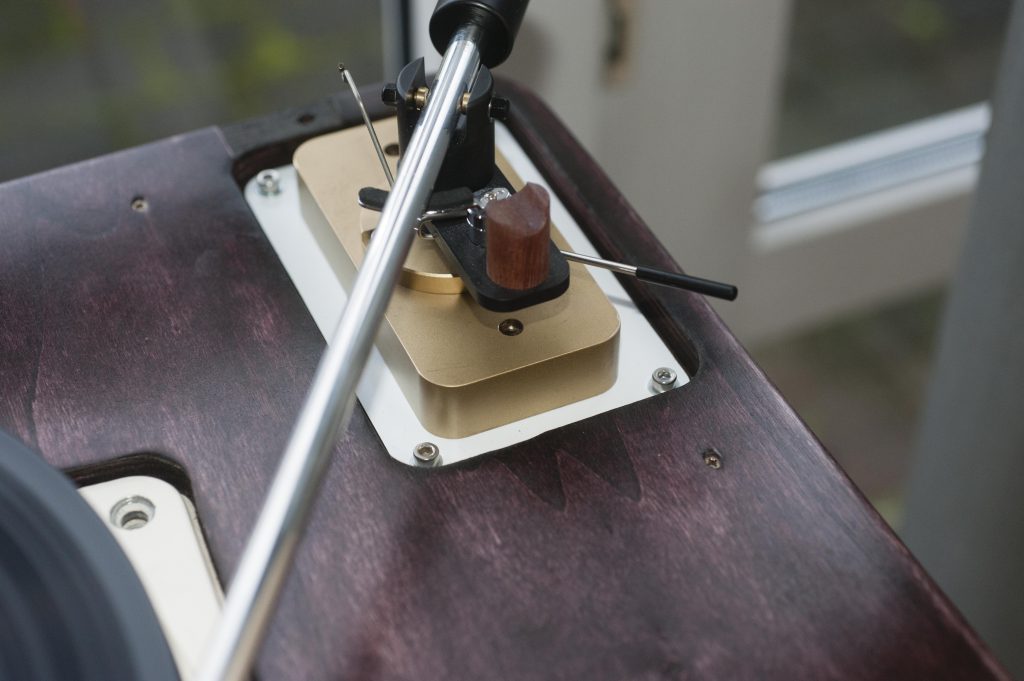
Effective tonearm mass: 11g
Now the calculator in under vinylengine fired:
Result:
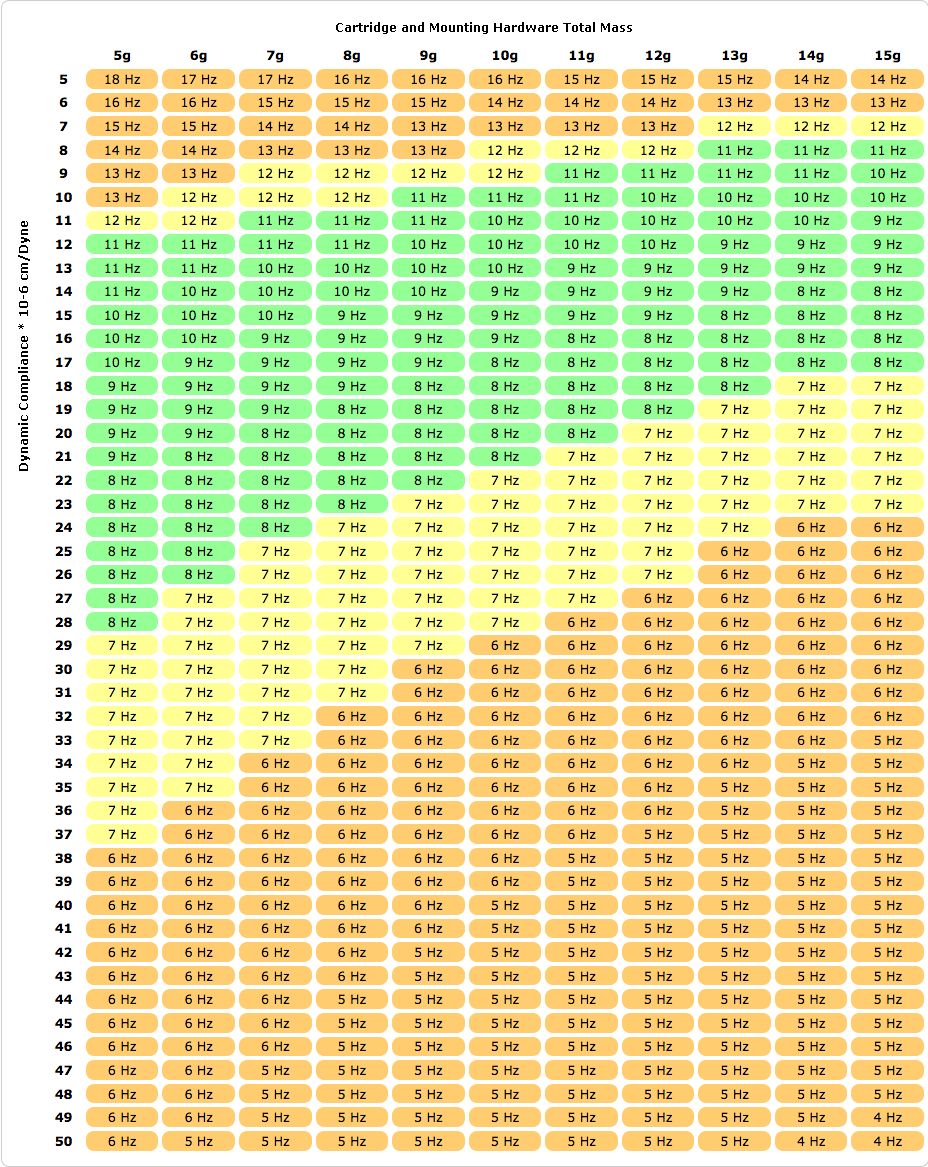
It is nice to see immediately that the area of the Dynamic Comliance spends a rather hard system (8 – 26 x10-6 cm / Dyne)
Among my existing systems would be the Denon DL103R (dC 5 – weight with headshell about 16g), the vdHul Colibri XGP (dC 20 – weight with headshell about 11g) or the SPU Ortofon Synergy (dC 8 – weight with headshell about 30g ) in question.
In practice, all three systems are really super at this Universal arm of advanced technology.
By contrast, the attempt of a softer system – especially the highly prized Pritchard system – alone is doomed to failure.
That’s why I got used to calculating and then testing !!
A second example to make the calculation clear again.
Example 2:
On a self-propelled direct drive (DUAL EDS900 engine) should also run a light arm due to the delicate lightweight construction, in the case of the SME Series III, 5g effective mass.
A great piece of precision mechanics. 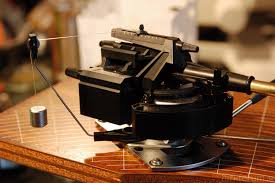
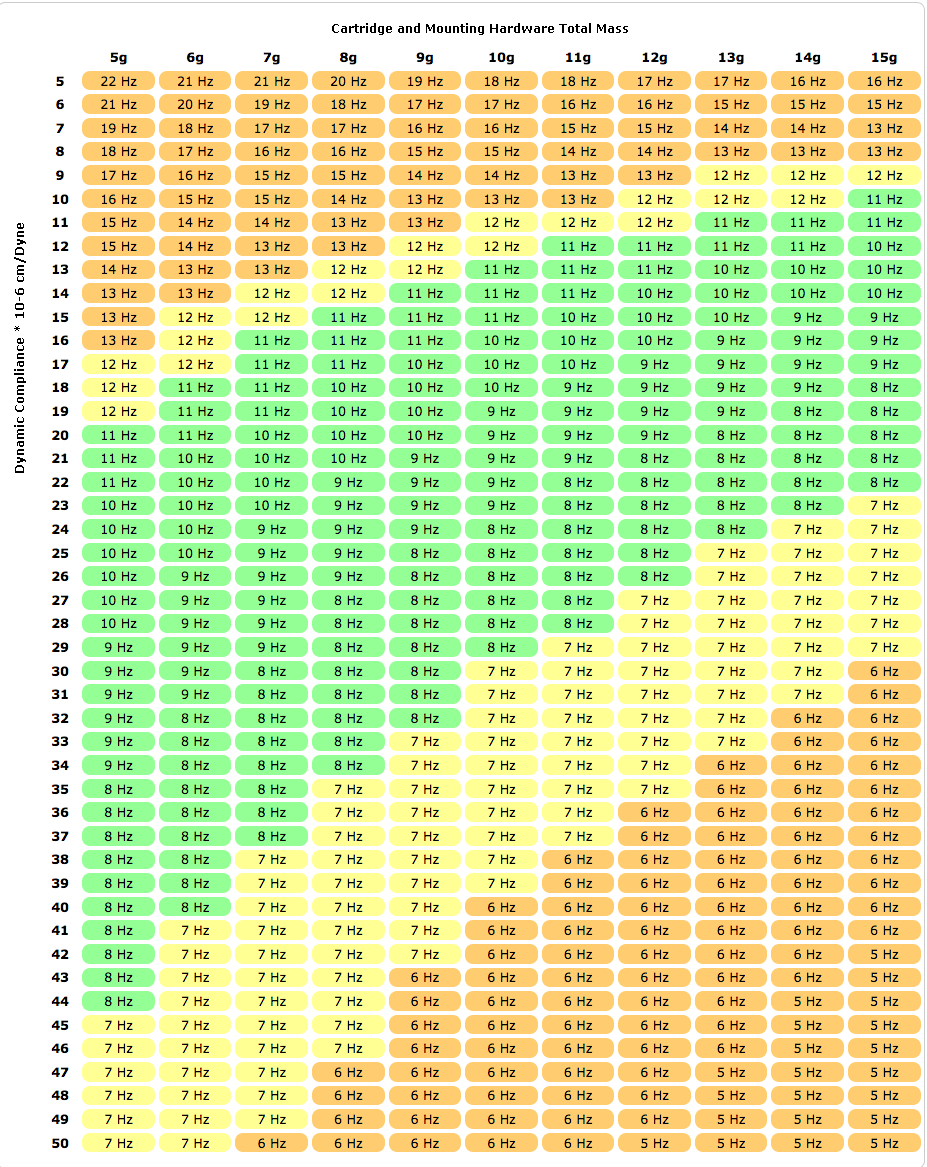
Aha, everything between 20 – 44 x 10-6 cm / Dyne fit, so for example the Grace 9L, with dC 40 mass 6g), or the ADC System 26, 27, ADC220.
“Soft” systems have to work!
The listening impression gives the right.
In this way, coming from the effective mass of the arm, the appropriate system can be limited and then selected.
In this way, the following tonearm pickup combinations have proven to me sound:
– SME 3012 12 inch -> DL 103R (vergosssen), vdH Kolibri, SPU standard
– Chic 12 inches -> SPU Synergy, vdH Kolibri, Denon DL103R, Ortofon Valencia
– Moerch -> vdH Hummingbird, Ortofon Valencia
– Micro Seiki 505 -> Dynvector 10 × 2
– SME Series III -> ADC 35, 26, 27, Grace 9L, ADC220
– EMT929 -> EMT TSD 15
– SME 309 -> Grado Reference High Output MI
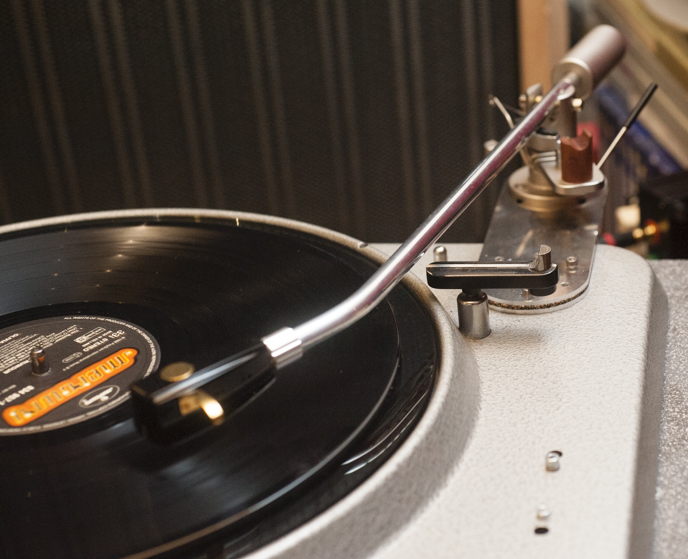
With these info’s I hope to have provided a small guide on how to approach the topic of Tone Arm Pickups without forgetting that both form a UNIT.
How I chose the arm of a player is a bit of vintage consciousness , a bit of technique and another gut feeling .
But in the choice of combinations I first calculate and then build up !!

